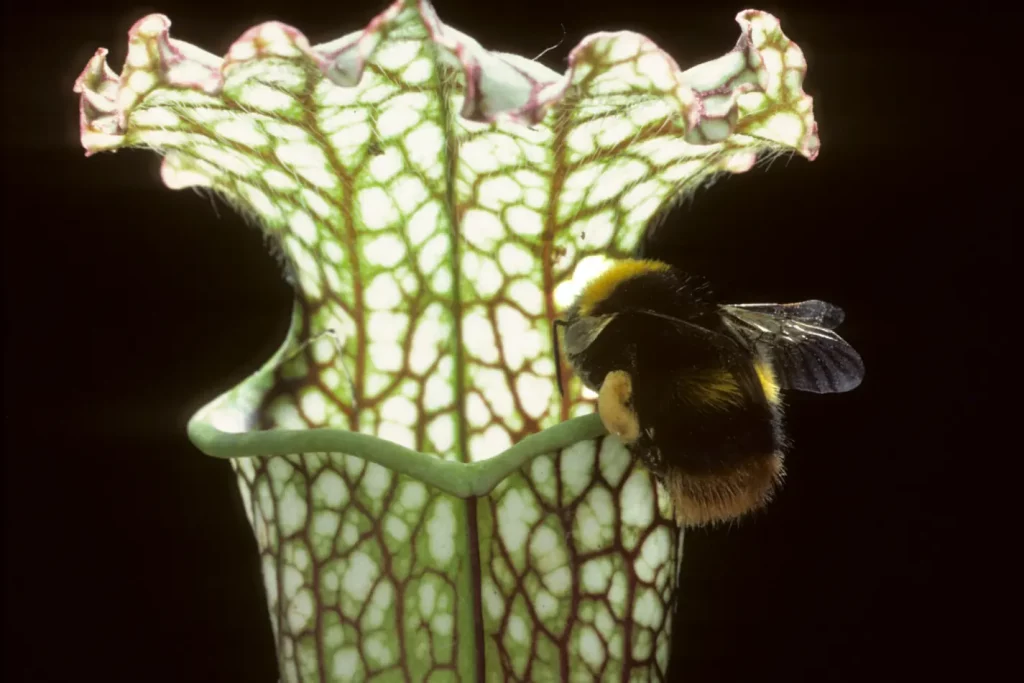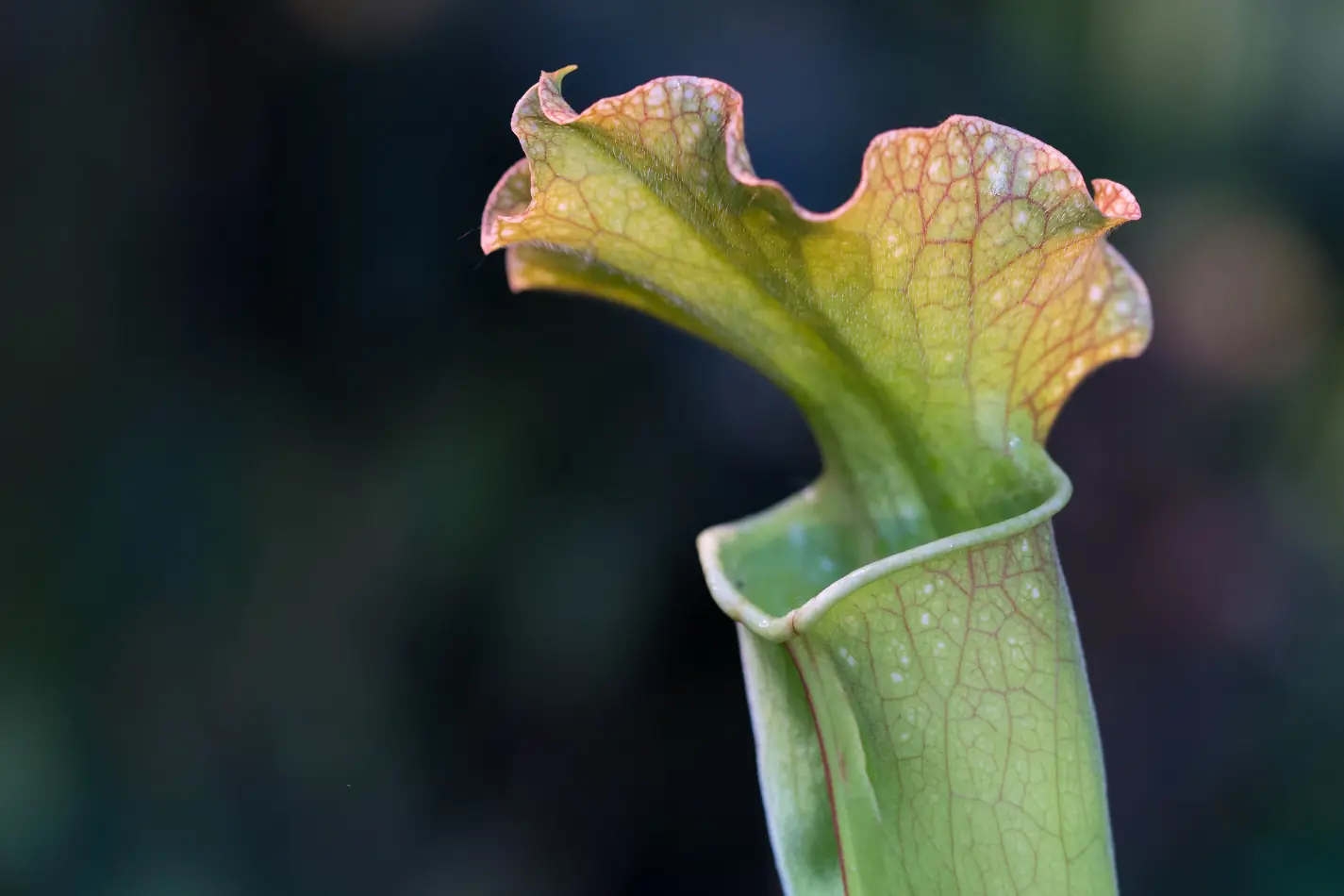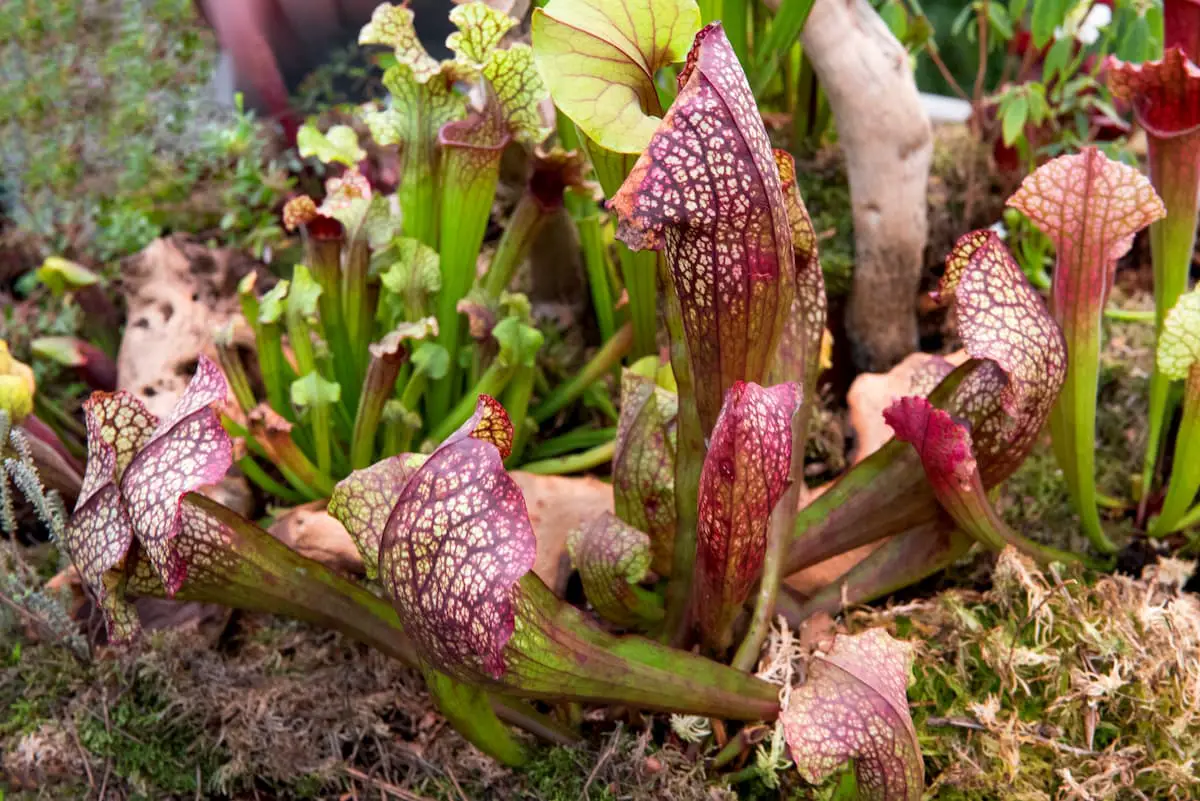The carnivorous pitcher plants have been around for a long time, and they are found all over the world. They come from different families of plants, but what is interesting about them is that they feed on insects! In this blog post, we will explore some of the most common pitcher plant species and learn how each one feeds.
Pitcher plants are a type of insectivorous plants that thrive in poor nutrient-devoid soil. To ensure they can grow in this low-quality dirt they build methods to catch and eat insects or anything else that they can catch in their traps.
The change has come over time, with poor soils the plants were forced to adapt, many different types of pitcher plants exist in the world today due to these evolutionary stressors.
This makes them one of the most interesting plants available for a home garden today!

What About Photosynthesis?
Pitcher plants do have a slight ability to photosynthesize, but it’s nothing compared to what they can do with their prey, they do have little ability to convert what little light their leaves get.
The ability is small and only present through the early parts of a pitcher plant’s life cycle as once they grow larger leaves and need more energy the level of photosynthesis becomes less important!
Poor Soil Quality Means Fewer Nutrients
One big issue with having poor soil quality is that it lacks nutrients. To make sure they can survive, many plants have to adapt and upgrade their methods of absorbing the small amount of food available in this environment.
These soils are often very acidic, making the minerals and nutrients largely unavailable for absorption. This is why so many plants have adapted to become carnivorous to supplement themselves.
Fortunately, this poor soil quality has benefits to the pitcher plants as there is very little other plant life to fight for space. Additionally, this means there can be a high volume of insect traffic which means there is prime nutrition around the corner.
Why Do They Eat Insects
One method pitcher plants use is by attracting insects with nectar or sweet scents into their pitchers where they lose footing and then become stuck inside.
When the bug gets trapped inside the pitcher plant, the fluid inside the pitcher begins to digest the insect and eat them.
The digestion process then begins by breaking down their exoskeleton and turning them into a liquid which is absorbed up through the walls of the pitchers’ tube-like shape.
This allows for plants to take in nutrients they would not be able to access otherwise!
What Size Insects or Animals Can a Pitcher Hold?
While many think about small insects like ants as the prey of pitcher plants, this isn’t always the case.
Pitcher plants actually feed on many different types of insects and even small to medium-sized animals like frogs, lizards, and even animals like rats!
While it is rare for larger mammals or creatures to fall into a plant’s trap, there are some cases where they have been recorded as having happened including humans!
This typically happens with smaller species that fall into the trap and then get stuck inside. The larger animals are not so easily caught!

What About Pollination?
With all those insects being caught how do pitcher plants reproduce? One main method of reproduction is through pollination. Many pitcher plants are known to smell like rotting flesh, which attracts insects that eat dead animals or meat.
This means they pull in good (pollinators) and food (other insects) and making sure the pollinators aren’t impacted is vital to their ability to reproduce and grow more.
This is done by producing different pheromones which ensure the bees and other pollinators travel the correct parts of the flower and do not fall into the pitcher trap.
This ensures feeding is maintained but that the plant is still able to reproduce!
Final Thoughts on Pitcher Plants and Insects
The pitcher plant is a carnivorous plant that feeds on insects and other small invertebrates for sustenance. These plants have evolved to have this unique capability because they don’t get enough nutrition from the soil as most other plants do.
They instead rely on what falls into their traps, which means they need to be in a location where prey will come close enough for them to catch it.
This may explain why you find these plants mostly near water or at least wet areas of ground as well as why some grow higher up off the ground than others – those are trying to increase the likelihood of catching prey.
One thing we can all learn from pitcher plants is how important soil quality really is!




Leave a Reply